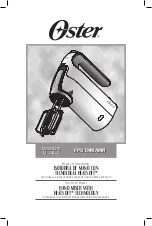
Channel EQ
The mono channels feature
3-band EQ +/-15dB
.
Mids are swept from
80Hz
to
8kHz
with
2.5kHz
highlighted in the graphics as (our) standard mid
frequency. The
HIGH EQ
is shelving at
12kHz
and
LOW EQ
shelves at
80Hz
. The stereo chan-
nel
EQ
is 4-band
+/-15dB
with fixed mids at
250Hz
and
2.5kHz
.
+/-15dB
and
LOW EQ
are
the same as the mono channels.
Setting the channel
EQ
, like setting the
GAIN
levels, is best done during a sound check. In this
case however, the less you vary things above or
below “
0,
” the better.
+/-15dB
represents consider-
able level change. If for example, you need to turn
down the
HIGH EQ
on a channel, perhaps due to
a persistant feedback problem with that mic, you
may need to counter-adjust the level fader. In any
case, big boosts are probably best avoided.
One cure for a bad feedback problem is to insert (see
INSERT
Jack
) a
graphic
or
parametric
EQ
into the
problem channel and adjust it to attenuate only the feedback frequency. That way, fewer
innocent
frequencies
will be affected. However, the channel
EQ’s MID SWEEP
control can often be used quite effectively to perform
a similar function. Simply set the
MID
at about
-6dB
then rotate the
SWEEP
control until the feedback stops.
Now turn the
MID
up slightly to normalize the frequency response as much as possible without feedback.
MON1 & MON2 Sends
These are
pre-fade, post-EQ
sends. Internal routing is…
1. to the MON masters and SOLO buttons
2. to the MON1 and 2 EQs
3. to the MON1 and 2 LINE LEVEL OUTPUTS
4. through the cutoff switches in the AMP C and D AMPLIFIER INPUTS
5. to the built-in, 275-Watt amplifiers C&D and finally
6. to the MON1 and 2 POWER AMPLIFIER OUTPUTS.
Dual monitor systems permit setting up two zones of coverage. Certain channels may be isolated through one
system or at least mixed extra loudly through it. For example the vocalists might want to hear themselves pre-
dominantly through their monitors. The other system might carry a more generalized mix for the rest of the band’s
monitors. Remember that the channel
MON1&2
send controls are affected by the channel
EQ
, but
NOT
the
fader. When feedback sets in, it’s often the monitors, not the mains, although it comes through both systems so it’s
hard to tell. When it happens, turn down the
suspect
channel’s
MON
sends. You’ll probably kill the feedback and
that channel’s level through the main
PA
can remain unchanged. Now you can adjust the
MON1
or
MON2 EQ
then turn that channel’s
MON
send back up (carefully, you may still have some
EQ
-ing to do).
AUX Send
The channel
AUX
send is
post
-
EQ
& post-fader. Internal routing is
1. to the AUX SEND master and CLIP LED, and
2. to the AUX SEND jack.
Since the
AUX
sends are
post
-fader, any changes to the channel fader levels will result in changes to
the
AUX
send levels. Therefore the
AUX
sends are useful for adding external effects (there are also ste-
reo
AUX RETURNS
,) and for mono recording purposes such as speeches, a demo record rhythm track,
etc. which do not require effects or graphic-
EQ
(this is a
pre
-effects,
pre
-
EQ
dry
signal).
EFX1 & 2 Sends
Like the
AUX
send, these are post-fader and post-EQ. The
EFX1
send is internally routed…
1. to the EFX1 SEND master fader,
2. to the internal digital effects system and EFX MODE switch,
3. to the EFX1 RETURN masters.
The
EFX2
send is routed
1. to the EFX2 SEND master fader, and (simultaneously)
2. to the EFX2 SEND jack and the EFX MODE button below the effects select dials.
POWERMAX
effects can operate either as two discreet mono effects systems with sixteen presets
each, or as a single stereo system with a total of
255 presets
. In
MONO
mode you can, for example, have
reverb on the
EFX1
system and a special effect on
EFX2
. These would be mixed together on the main and
monitor signals by the
EFX RETurn
to
L&R
and
MON1 & 2
masters.
Summary of Contents for POWERMAX 1622
Page 1: ...OWNER S MANUAL MANUEL de L UTILISATEUR Y orkville OWNER S MANUAL MODEL TYPE YS1011 ...
Page 13: ...11 ...
Page 27: ...25 ...
Page 32: ...30 ...






































